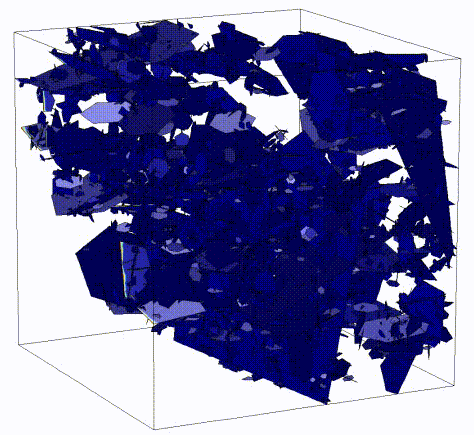- Published on
iCP v2.0 release
- Authors
Author
- Name
- iCP Teammail

We are pleased to announce the release of version 2.0 of iCP! iCP 2.0 includes new capabilities such as adding extra dimensions and chemo-mechanical couplings and has been updated for compatibility with the latest releases of Comsol and PhreeqC.
You can download iCP 2.0 here and you can request license by filling in the license form.
The following list outlines all the new capabilities/improvements added in iCP 2.0:
- Extra dimensions can now be added to your reactive transport models. Extra dimensions extend a standard geometry with additional spatial dimensions and can be used to represent a rock matrix in a fracture-matrix system. The developments carried out in the iCP code allow to include chemical reactions in both domains, the extra dimension representing the matrix and the fracture. The main benefit of this methodology is the possibility to include matrix diffusion in discrete fracture networks (DFNs) of thousands of fractures with complex intersections, see for instance the animation below. It can be challenging or impossible to mesh the fractures and rock matrix with such a complex geometry. In this context, the extra dimensions of COMSOL can be very handy when the matrix has low permeability and transport is diffusion dominated. An example (Example 3) has been added to the examples library to demonstrate how to set up a model with extra dimensions.

- Mechanical modelling performed in Comsol can now be coupled with reactive transport with iCP. These capabilities can be used to model the chemical degradation of concrete and its impact on mechanical properties (see animation below) or to predict the swelling potential of bentonite under different geochemical conditions. Chemo-mechanical coupling is demonstrated with Example 4 in the examples library.

The amount of exchanger and surface complexes specified in PhreeqC can now be updated from Comsol. This can be used to model variations in number of sites or cation exchange capacity due to mineral dissolution/precipitation.
iCP 2.0 is compatible with the latest releases of Comsol: versions 5.4, 5.5 and 5.6. iCP 2.0 by runs Comsol in Standalone mode (without Comsol server) by default, which improves computational performance and memory handling. Note that this option is not available with Comsol 5.5.
iCP 2.0 is compatible with Comsol physics that include internal DOFs. This means that physics can now be run with the Compute boundary fluxes option enabled.
The IPhreeqC library has been updated to the latest version, 3.7.0.
The default water content used by iCP (when it is not coupled) is now the value specified in the input PhreeqC files. Note that in previous versions this value was overwritten by default by 1 kg of water.
Error logging has been improved in iCP 2.0. When an error occurs in the chemical step, iCP now specifies the coordinates at which the error occurred. Also, when an error occurs in the transport step the full error message given by Comsol is displayed.